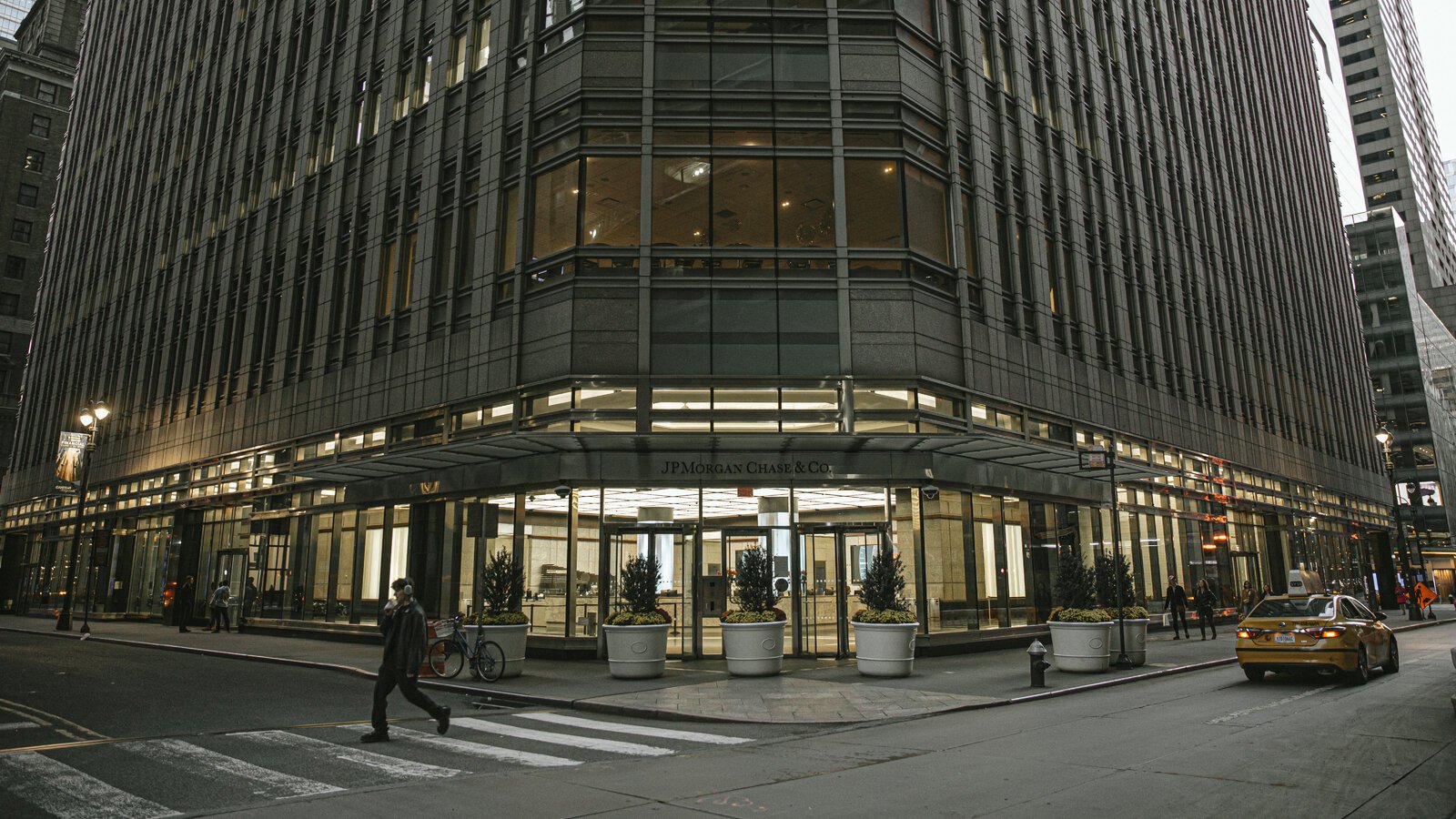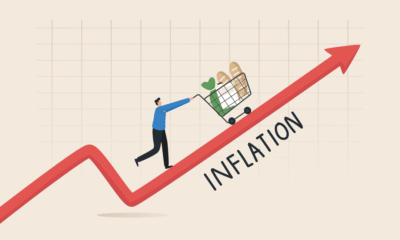Economics
European Markets Amid Inflation and Energy Crises: An In-Depth Look

Introduction to Current Economic Climate
The economic landscape in Europe has been notably shaped by a combination of inflationary pressures and an ongoing energy crisis. These factors have created a complex situation affecting businesses, consumers, and policymakers alike. As economies strive to navigate these challenges, understanding the interplay between inflation and energy supply is essential for grasping the broader European market dynamics.
Inflation in Europe has reached levels not seen in decades, primarily driven by escalating energy prices and supply chain disruptions. The conflict related to energy resources, particularly natural gas, has exacerbated existing vulnerabilities, resulting in significant increases in costs for both households and industries. These inflation trends are illustrated through key economic indicators such as the Consumer Price Index (CPI), which has consistently reported higher than expected figures, signaling a strain on purchasing power and living standards.
The European Central Bank (ECB) has responded to this economic upheaval by reassessing its monetary policy stance. Although traditionally aimed at maintaining price stability, the ECB is now confronted with the dual challenge of combating inflation while ensuring economic growth. Interest rates have been adjusted in an effort to manage inflationary pressures, yet there is a growing concern over the impact of these measures on economic recovery, especially in the wake of increased borrowing costs and potential recessionary signs in some member states.
Moreover, various governments within the European Union have initiated policies aimed at addressing the energy crisis, including increasing renewable energy investments and promoting energy efficiency. These initiatives are critical as Europe seeks to diversify its energy sources to reduce reliance on foreign imports and enhance energy security in the long run.
As we delve deeper into the implications of these trends, it is crucial to recognize how these factors interconnect and influence the future of European markets in a highly volatile economic climate.
Understanding Inflation in Europe
Inflation, a term frequently echoed in economic discussions, refers to the general increase in prices and a corresponding decline in the purchasing power of currency. Within the European context, inflation has become a focal point as economies grapple with various pressures. The European market landscape has historically seen fluctuations in inflation rates attributed to diverse causes such as demand-pull factors, cost-push factors, and built-in inflation. Demand-pull inflation occurs when demand for goods and services exceeds available supply, while cost-push inflation arises from an increase in the costs of production, often influenced by rising energy prices or labor costs.
In recent years, the inflationary landscape in Europe has been shaped by an array of factors. The post-pandemic recovery, for instance, has significantly altered consumer behavior and demand dynamics. As restrictions lifted, pent-up demand surged, leading to a mismatch between supply chains and consumer spending. Furthermore, geopolitical tensions, such as the conflict in Ukraine and its subsequent impact on energy supplies, have exacerbated inflationary pressures by causing energy prices to soar. These combined elements have contributed to an elevated inflation rate across many European nations, raising concerns among policymakers and investors alike.
Historically, Europe has experienced various inflationary trends; however, the current situation marks a unique intersection of challenges. Central banks, such as the European Central Bank (ECB), have started implementing strategies to curb inflation, balancing the need for economic growth with price stability. By adjusting interest rates and employing other monetary measures, the ECB aims to control inflation expectations. The implications of sustained inflation for European markets are profound, affecting everything from consumer spending to investment strategies. Understanding these intricate dynamics is crucial for any stakeholder navigating the European economic landscape in these tumultuous times.
The Energy Crisis: Roots and Ramifications
The energy crisis presently affecting Europe can be traced back to a multitude of complex and interrelated causes, chief among them being geopolitical tensions and the continent’s ongoing transition towards sustainable energy sources. The rapid shift towards renewable energy, initially viewed as a vital step toward reducing carbon emissions, has also exposed vulnerabilities in energy supply chains. Furthermore, the ongoing conflict in Eastern Europe has led to significant disruptions in gas supplies, heightening concerns over energy security across the region.
The European gas market has been significantly impacted by dwindling supplies and rising costs, resulting in surging energy prices that have escalated across various sectors. Industries that are particularly energy-intensive, such as manufacturing, have felt the disproportionate effects of escalating energy costs. These price hikes not only affect production expenses but also translate into higher costs for consumers, thereby amplifying inflationary pressures across the economy.
Moreover, the energy crisis has prompted a reflection on energy policies within the European Union. While sustainability remains a long-term goal, the immediate need for reliable energy sources has led to a reconsideration of existing frameworks. Nations are now exploring various avenues to bolster energy independence, including the revival of fossil fuel projects that were previously deemed non-viable or incompatible with climate commitments. Additionally, investment in energy infrastructure is becoming paramount as countries aim to diversify their energy portfolios to mitigate future risks.
In conclusion, the ramifications of the current energy crisis transcend mere price fluctuations; they encompass broader implications for energy policy, market stability, and the trajectory towards sustainability. As industries adapt to this evolving landscape, the interplay between geopolitical factors and energy supply chain strategies will undoubtedly shape Europe’s economic future in the coming years.
Impact of Inflation and Energy Crisis on Different Sectors
In recent times, the European economy has faced significant challenges stemming from inflation and an ongoing energy crisis. These two interrelated issues have had varying impacts across multiple sectors, fundamentally altering the landscape of economic activity. A closer examination reveals how sectors such as manufacturing, agriculture, and services are grappling with these challenges.
The manufacturing sector has been notably affected by rising energy costs and inflationary pressures. Higher energy prices have led to increased production costs, prompting manufacturers to either absorb these costs or pass them on to consumers. In many instances, manufacturers are opting for the latter, which adds to inflationary pressures. Additionally, the uncertainty surrounding energy supplies has led to disruptions in production schedules and supply chains, further complicating the operational landscape.
Meanwhile, the agricultural sector faces its own set of challenges. Rising fertilizer and fuel costs due to elevated energy prices have squeezed profit margins for farmers. As food prices rise, the effect on consumer purchasing power can lead to decreased demand for certain agricultural products. This sector is particularly vulnerable since food often constitutes a substantial portion of household expenditure, limiting consumers’ ability to absorb further price hikes.
The service industry, comprising sectors such as hospitality, tourism, and retail, has also been impacted. Inflation has led to increased operational costs for businesses in this sector, including wages, rents, and utilities. Consequently, many service providers have raised prices to maintain profitability, which can result in reduced consumer spending. Moreover, the energy crisis, especially during peak travel seasons, has influenced both the cost of transportation and the overall travel experience, leading to an unpredictable service market.
In summary, the interplay between inflation and the energy crisis has resulted in substantial ramifications across various sectors in the European economy. With manufacturing, agriculture, and services grappling with rising costs and supply chain disruptions, the future remains uncertain as stakeholders navigate these complex challenges.
Central Bank Policies and Responses
In the face of rising inflation and ongoing energy uncertainties, central banks in Europe have undertaken significant measures to stabilize their economies. The European Central Bank (ECB), in particular, has adjusted its monetary policy framework to address the current economic challenges. One of the key responses includes interest rate changes, aiming to counteract the inflationary pressures that have escalated due to supply chain disruptions and energy price spikes.
In recent months, the ECB has gradually increased its benchmark interest rates in an effort to curb inflation, which reached levels not seen in years. These interest rate hikes are designed to cool down consumer spending, thereby alleviating some of the price pressures that have been affecting various sectors of the economy. By raising the cost of borrowing, the ECB seeks to moderate demand for goods and services, leading to more stable price levels over time.
Alongside interest rate adjustments, the ECB has also employed quantitative easing measures to inject liquidity into the economy. This approach aims to ensure that financial markets remain functional, thus supporting lending to businesses and households. The continuation of asset purchasing programs demonstrates the ECB’s commitment to a strong economic recovery while also addressing inflationary risks. Moreover, the central bank has signaled its readiness to adapt these measures based on prevailing economic conditions, reflecting a flexible approach to policy implementation.
Overall, the actions taken by the ECB and other European central banks are essential for navigating the complexities of rising inflation and energy crises. They strive to strike a balance between promoting economic growth and managing inflationary expectations amidst these unprecedented challenges. As these policies evolve, they will play a critical role in shaping the financial landscape in Europe moving forward.
Market Sentiment and Consumer Behavior
As Europe grapples with rising inflation and escalating energy costs, consumer sentiment and behavior have shifted significantly. The repercussions of these economic challenges are evident in various facets of consumer spending and financial confidence across the continent. A notable trend is the increase in consumer caution; as living costs climb, many individuals are reassessing their expenditure decisions, leading to an observable decline in discretionary spending. For instance, purchases of non-essential items have seen a reduction, with consumers prioritizing essentials such as food and utilities.
The impact of high inflation on savings rates is another pivotal element in defining the current economic landscape. Many consumers, faced with the pressures of increased living expenses, have begun to divert a larger portion of their income towards savings in anticipation of prolonged financial uncertainties. Reports indicate that households, particularly those in lower income brackets, are seeking to build emergency funds as a preventive measure against any further financial distress. Interestingly, this trend of heightened savings is juxtaposed with a reluctance to invest in long-term financial products, reflecting a consumer sentiment rooted in caution.
Furthermore, overall confidence in the economic outlook has taken a hit. Surveys have shown that a significant number of European citizens harbor concerns about future job security and the potential for recession, which in turn influences their spending behavior. The overarching sentiment suggests a shift from optimism to a more cautious perspective, as consumers navigate the complexities of an inflation-ridden economy compounded by energy uncertainties. This shift highlights the delicate balance between immediate financial needs and long-term economic health. Understanding these dynamics is crucial for policymakers and businesses alike as they adapt to the changing landscape of consumer behavior in response to inflation and energy crisis challenges.
Investment Strategies in Volatile Markets
In light of the current economic climate marked by heightened inflation and ongoing energy crises, investors must adopt diversified and strategic approaches to safeguard their assets and capitalize on potential opportunities. Asset diversification acts as the cornerstone for navigating today’s volatile European markets. By spreading investments across various asset classes—such as equities, bonds, commodities, and real estate—investors can mitigate risks associated with any single market downturn. This strategy not only serves to balance risk and reward but also capitalizes on differing performance cycles of individual assets, thereby enhancing overall portfolio resilience.
Value investing emerges as another prudent strategy in unstable environments. This approach focuses on identifying undervalued stocks or sectors that may present long-term growth potential despite short-term market fluctuations. In the current European landscape, industries such as renewable energy, technology, and consumer staples may offer attractive valuations amid potential economic recovery. By conducting thorough research and focusing on fundamental metrics like price-to-earnings ratios, investors can identify companies that are likely to withstand inflationary pressures while benefiting from the shift towards sustainable energy.
Furthermore, sectors poised for growth during these uncertain times merit close observation. For instance, utilities and essential services tend to maintain steady demand even amidst economic hardships, presenting stable investment avenues. Adopting risk management techniques is also vital; options such as setting stop-loss orders can help protect investments from unexpected downturns, while regularly reviewing and adjusting portfolios in response to changing market conditions can enhance agility in volatile environments. Moreover, investors should consider hedging strategies involving commodities such as oil and natural gas, which can help offset losses stemming from specific sector downturns due to energy market fluctuations.
Future Outlook for European Markets
The European markets are currently navigating a complex landscape marked by inflationary pressures and ongoing energy crises. Moving forward, a multitude of factors will influence the trajectory of these markets, including governmental policy responses, geopolitical dynamics, and shifts in consumer behavior. It is crucial to consider potential recovery scenarios that may unfold in the coming years.
One optimistic scenario points to a gradual stabilization in energy prices as nations implement diversified energy sourcing strategies. European nations are investing heavily in renewable energy to mitigate reliance on fossil fuels and enhance sustainability. As these investments bear fruit, businesses and consumers may experience relief from energy costs, supporting better economic conditions and market confidence. Additionally, streamlined regulations backing innovation in energy technology could stimulate growth in various sectors, ultimately driving market recovery.
However, the long-term impact of current inflation trends cannot be overlooked. Persistent inflation has the potential to erode consumer purchasing power, leading to adjustments in spending habits that may adversely affect market sectors reliant on consumer expenditure. Central banks across Europe are likely to respond with monetary tightening mechanisms aimed at curbing inflation, which may further influence market conditions. The success of these strategies will largely depend on balancing interest rates and economic growth without triggering recessionary conditions.
Markets that adapt effectively to the challenges ahead will likely emerge stronger. Firms that prioritize sustainability and innovative practices are expected to foster resilience, providing a competitive edge in an evolving economic landscape. In essence, while European markets may face headwinds from inflation and energy challenges, strategic adaptations and robust policy measures can pave the way for a more stable and enduring recovery.
Conclusion: Navigating Toward Stability
As we reflect on the current economic landscape in Europe, it becomes evident that the challenges posed by inflation and energy crises are not isolated phenomena but rather interconnected issues that significantly influence market dynamics. The persistent rise in prices, exacerbated by fluctuating energy costs, is reshaping consumer behavior and business strategies alike. It is crucial for stakeholders, including policymakers and corporate leaders, to recognize these interconnected factors in their decision-making processes.
The discussion surrounding inflation in European markets highlights the pressing need for effective monetary policies that can mitigate the adverse effects on purchasing power and encourage sustainable growth. Central banks are tasked with navigating a fine line between combating inflation and fostering economic recovery, necessitating adaptive strategies that can respond to rapidly changing conditions. A thorough understanding of these dynamics will be essential for ensuring that monetary interventions are timely and effective.
Moreover, the energy crises have underscored the vulnerabilities within Europe’s supply chains and energy dependencies. The transition towards sustainable energy sources must be prioritized to enhance resilience against future shocks. Investing in renewable energy infrastructure and diversifying energy supplies are essential steps that European nations can take to secure their economic stability. Collaboration among member states will also play a key role in addressing these challenges collectively.
In essence, while the hurdles facing European markets are formidable, they also present an opportunity for fundamental transformation. By recognizing the symbiotic relationship between inflation, energy security, and market stability, Europe can chart a course toward a more robust and resilient economic future. A strategic approach combined with innovative solutions will be pivotal in navigating the complexities of the current landscape.
Finance & Investment
Trade Surveillance in Banking: Lessons from JPMorgan’s $348 Million Fine

Trade surveillance is a critical compliance function in banking and financial services that ensures the integrity of market activities and adherence to regulatory requirements. Effective trade monitoring helps prevent market abuses such as insider trading, front-running, and manipulation, protecting both investors and the broader financial system. Recently, JPMorgan Chase faced a substantial $348 million fine imposed by the Federal Reserve and the Office of the Comptroller of the Currency (OCC) due to inadequate trade surveillance controls. This high-profile penalty serves as a stark reminder to banks worldwide about the vital need for robust monitoring systems. Trade surveillance involves collecting and analyzing massive volumes of trading data in real time to identify suspicious behaviors or patterns that may indicate misconduct. As markets become more complex and trading volumes grow exponentially, financial institutions must invest heavily in surveillance technologies and governance frameworks to meet evolving regulatory expectations and safeguard their reputations.
The JPMorgan Case: What Went Wrong?
JPMorgan Chase’s penalty arose from several shortcomings in its trade surveillance program. Regulators found that the bank’s monitoring systems failed to adequately cover all trading venues and did not effectively analyze the full range of data needed to detect potential misconduct. Gaps in oversight allowed certain trading activities to go unchecked, increasing the risk of market abuses. Additionally, the bank’s controls were insufficient in preventing or identifying misconduct promptly, which is crucial for timely investigation and remediation. These deficiencies pointed to weaknesses in both technology infrastructure and internal governance. The case highlighted the consequences of inadequate surveillance, not only in terms of financial penalties but also reputational damage and potential loss of client trust. For financial institutions, the lesson is clear: trade surveillance cannot be an afterthought but must be a comprehensive, continuously updated program integral to daily operations.
Best Practices for Effective Trade Surveillance Systems
To avoid costly penalties and operational risks, banks need to implement trade surveillance systems that are robust, scalable, and adaptive. Best practices include integrating advanced analytics capable of processing large data sets across multiple trading platforms in real time. Machine learning and artificial intelligence technologies are increasingly being used to improve anomaly detection, reduce false positives, and provide compliance teams with actionable insights. Comprehensive surveillance programs also require strong governance frameworks that ensure clear roles, responsibilities, and accountability within the institution. Regular audits and continuous improvement cycles help identify gaps and adapt to new market practices or regulatory changes. Employee training and cultivating a compliance-oriented culture are equally important to ensure that staff understand surveillance requirements and actively support adherence. Transparency in reporting and effective communication with regulators can further enhance a bank’s ability to manage compliance risks proactively.
Technology’s Role in Enhancing Trade Surveillance
The complexity of modern financial markets demands that trade surveillance leverages cutting-edge technology solutions. Automated systems can monitor millions of trades, cross-referencing data from various sources such as order books, messaging systems, and market data feeds. AI-powered algorithms identify suspicious patterns that human monitors might miss and prioritize alerts for compliance teams to investigate. These technologies not only improve detection speed but also help reduce the burden of manual reviews, allowing staff to focus on high-risk cases. Additionally, cloud computing and big data architectures enable scalable storage and processing power essential for handling the volume and velocity of trade data. Implementing these technological advancements positions banks to meet stringent regulatory standards while maintaining operational efficiency and competitive advantage.
Strategic Takeaways for Banks and Financial Institutions
The JPMorgan fine underscores that trade surveillance is a critical area where banks cannot afford complacency. Financial institutions must treat compliance as a strategic priority, allocating sufficient resources to technology, people, and processes. Proactive investment in surveillance infrastructure not only reduces the risk of regulatory penalties but also enhances trust among clients and investors. Moreover, comprehensive trade monitoring helps detect internal control weaknesses and potential operational risks early, preventing larger issues. Institutions should conduct regular risk assessments to identify vulnerabilities and tailor surveillance parameters accordingly. Collaboration with regulators and industry groups can provide insights into emerging threats and best practices. Ultimately, integrating trade surveillance into the core of banking operations fosters a culture of integrity and resilience that benefits the institution and the financial markets as a whole.
Conclusion: Compliance as a Competitive Advantage
In conclusion, the JPMorgan Chase $348 million fine serves as a powerful cautionary tale for the banking sector, emphasizing the critical importance of effective trade surveillance. As financial markets evolve and regulatory scrutiny intensifies, banks must invest in sophisticated monitoring systems supported by advanced analytics and a strong compliance culture. Trade surveillance is not merely a regulatory obligation but a strategic tool that protects market integrity, strengthens client relationships, and mitigates operational risks. By learning from high-profile cases like JPMorgan’s, financial institutions can enhance their surveillance capabilities, avoid costly fines, and maintain their competitive edge in a complex and rapidly changing industry landscape. For banks committed to excellence, compliance and innovation must go hand in hand to build sustainable, trustworthy financial services for the future.
Economics
Asia’s Private Credit Boom: What It Means for Retail Investors

The Asia Pacific region is witnessing an extraordinary surge in private credit, transforming the financial landscape significantly. Private credit refers to direct lending to companies outside public markets, and over the last decade, this sector’s assets under management have grown from around $500 million to nearly $2 trillion. This rapid expansion is largely driven by emerging markets such as India and Australia, where businesses increasingly seek alternative financing solutions beyond traditional bank loans and public debt offerings. Historically, private credit has been dominated by institutional investors including pension funds and private equity firms. However, the landscape is evolving as retail investors gain access to this asset class through changing regulations, fintech platforms, and increased market demand. The expanding private credit market now offers retail investors an opportunity to diversify their portfolios and participate in an asset class that has demonstrated strong returns and resilience.
Why Private Credit Appeals to Retail Investors
Private credit has grown in popularity due to its potential to offer higher returns compared to traditional fixed-income investments such as government bonds or corporate debt. This is because private credit involves lending to companies with less liquidity and higher credit risk, factors that typically command a premium in yields. Retail investors often face challenges like low interest rates on savings and volatile stock markets, making private credit an attractive alternative for income generation and diversification. The growing involvement of financial giants such as JPMorgan Chase, which has recently allocated over $50 billion into the Asia Pacific private credit market, highlights the confidence that institutional investors have in the asset class. This institutional interest helps validate the opportunity for retail investors to explore private credit as part of a balanced investment strategy that supports both income goals and risk mitigation.
Regional Drivers Behind Asia’s Private Credit Boom
Asia’s private credit growth is closely tied to specific market conditions and regulatory environments within the region. In India, the tightening of banking regulations and a rise in non-performing assets have created a financing gap that private credit funds are actively filling. This has allowed companies to access capital through more flexible and tailored lending arrangements. Meanwhile, Australia’s advanced financial system and regulatory framework support a vibrant ecosystem of private credit funds and alternative lending platforms. These developments offer retail investors in these markets a variety of ways to participate in private credit. Investors can access this asset class through private debt mutual funds, alternative asset management platforms, and regulated digital lending marketplaces. Nevertheless, understanding the regulatory landscape and investment vehicle structures is critical to ensuring compliance and aligning investments with personal risk tolerance.
Key Risks and Considerations for Retail Investors
While private credit offers appealing opportunities, it is important for retail investors to be aware of its unique risks and challenges. Unlike publicly traded securities, private credit investments often involve longer lock-in periods during which liquidity is limited. This means investors may not be able to access their funds quickly, which could be a disadvantage for those requiring flexible cash flow. Additionally, private credit carries credit risk, meaning the possibility of borrower default can impact returns. Transparency is typically lower in private credit compared to public markets, so investors should diligently assess the quality and track record of the fund managers or platforms offering these investments. Understanding the underlying borrower profiles and loan terms is essential to mitigate potential losses. Fees can also be higher due to the complexity involved in underwriting and managing private loans. For these reasons, retail investors should perform comprehensive due diligence, seek professional advice, and only allocate a suitable portion of their portfolios to private credit.
The Role of Education and Professional Guidance
Given the complexities of private credit investing, education and expert advice are indispensable for retail investors. Keeping abreast of regulatory changes, market trends, and emerging opportunities is vital to making informed decisions. Awareness of how alternative investments are regulated in different countries within Asia Pacific helps avoid compliance issues and ensures access to legitimate investment products. Many financial advisors recommend that retail investors allocate a moderate portion of their investment portfolios to private credit as a way to enhance income and reduce correlation with traditional asset classes. However, this allocation should reflect an investor’s financial goals, risk appetite, and liquidity needs. Partnering with experienced fund managers or licensed investment platforms can provide additional safeguards and insights into this relatively complex market.
Supporting Regional Economic Growth Through Investment
Investing in private credit is not only about financial returns; it also plays an important role in supporting economic growth in Asia Pacific. Private credit financing helps small and medium enterprises (SMEs), startups, and infrastructure projects secure the capital they need to expand operations, innovate, and create jobs. Retail investors who participate in this market contribute indirectly to these positive economic outcomes, fostering development and entrepreneurship across the region. This dual benefit of combining financial gains with social impact adds an appealing dimension to private credit investment. It allows investors to align their portfolios with broader economic progress and community development goals, enhancing the meaning and satisfaction derived from their investments.
Conclusion: Unlocking Opportunities in Asia’s Private Credit Market
In summary, the Asia Pacific private credit boom offers an exciting and valuable opportunity for retail investors ready to explore alternative asset classes. The rapid market growth, strong institutional backing, and improving regulatory frameworks create a conducive environment for investment. However, retail investors must remain cautious and informed, understanding the risks related to liquidity, credit, and transparency. A well-researched and diversified approach, combined with professional guidance, can help investors unlock the benefits of private credit while managing potential downsides. As private credit continues to mature and gain accessibility, it is expected to become a vital part of diversified investment portfolios, offering both attractive financial returns and meaningful economic impact across the region.
Investing
Global Investor Outflows from U.S. Stocks & Dollar

In a shift that is sending ripples across financial markets, institutional investors around the world are pulling back from U.S. equities and reducing exposure to the U.S. dollar, signaling a significant change in sentiment toward American assets. According to the latest Bank of America Global Fund Manager Survey, global investors are now the most underweight on U.S. stocks in more than two decades, with the dollar facing similar skepticism as a long-term safe-haven asset. This transition is being fueled by multiple converging factors, including geopolitical instability, growing U.S. fiscal deficits, trade tensions, and an increasingly favorable investment climate in Europe and select emerging markets. For investors, economists, and policymakers alike, this trend represents a rebalancing of global capital flows that could reshape market dynamics in the months ahead.
Investor Sentiment Toward U.S. Markets Hits Multi-Year Lows
The Bank of America survey, considered a key barometer of global institutional sentiment, reveals that fund managers have turned heavily underweight on U.S. stocks and the dollar, preferring instead to rotate their portfolios into European and Asian equities. The survey showed that 36% of participants are now net underweight U.S. equities—the highest level since 2003. At the same time, positioning on the dollar turned net negative for the first time in over five years, with investors citing mounting fiscal concerns, valuation extremes, and weakening macroeconomic indicators.
The U.S. equity market, especially the tech-heavy NASDAQ, has experienced an extraordinary bull run over the last several years. But now, investors are questioning the sustainability of elevated valuations, particularly as economic growth slows, earnings forecasts are revised downward, and inflation remains persistently above target. Many portfolio managers believe the best returns may no longer be found in U.S. assets alone.
Rising U.S. Debt and Fiscal Deficits Raise Red Flags
A key driver of investor caution is the ballooning U.S. fiscal deficit. The Congressional Budget Office (CBO) projects that the U.S. federal deficit will reach over $1.8 trillion this year, driven by increased government spending, rising interest costs, and lower-than-expected tax revenues. The national debt is now projected to exceed 125% of GDP by 2030, raising serious questions about long-term fiscal sustainability.
Investors fear that soaring U.S. debt levels could lead to a loss of confidence in Treasury securities, pushing yields higher and triggering volatility in global credit markets. This concern is magnified by the growing political polarization in Washington, which has led to repeated debt ceiling standoffs and policy gridlock. As a result, some asset managers are choosing to diversify their bond portfolios with sovereign debt from countries like Germany, Canada, and Australia—nations viewed as having stronger fiscal discipline.
Geopolitical Tensions Erode Dollar Safe-Haven Appeal
The traditional role of the U.S. dollar as a global safe-haven currency is also being called into question. With the U.S. now embroiled in rising geopolitical conflicts, including its military engagement in the Middle East and an escalating trade war with China, the perception of the dollar as a “neutral” or stable currency is beginning to fade. Several countries, particularly in the Global South, have voiced frustration over the dominance of the dollar in international trade, and some have even accelerated efforts to settle trade in alternative currencies such as the euro, yuan, or local currency blocs.
In response, central banks in emerging markets are reducing their U.S. dollar reserves and increasing holdings in gold and non-dollar currencies. This trend, while gradual, is gaining momentum and contributing to the dollar’s underperformance against a basket of global currencies. The U.S. dollar index (DXY) has declined by nearly 6% year-to-date, reflecting both diminished investor confidence and a broader reconfiguration of reserve management strategies.
Attractive Valuations Abroad Drive Capital Outflows
While risks in the U.S. are mounting, attractive investment opportunities abroad are also contributing to the outflow of capital from American markets. European equities, particularly in sectors like green energy, luxury goods, and financial services, are seeing renewed interest thanks to relatively low valuations and improving macroeconomic stability. The recent ECB rate cuts and Eurobond discussions have added to optimism about the region’s fiscal and financial integration.
In Asia, countries like India, Indonesia, and Vietnam are emerging as new hotspots for foreign direct investment and equity inflows. These economies offer robust growth prospects, younger demographics, and increasingly tech-driven industries. Additionally, Japan’s bond market is seeing increased institutional buying, as long-term yields rise in response to the Bank of Japan’s policy changes.
This global diversification strategy is not just about seeking higher returns—it’s also about managing risk. Investors are increasingly looking to balance their portfolios geographically, reducing dependence on any single region and hedging against macroeconomic shocks that may be specific to the U.S.
Currency Hedging and Diversification as Defensive Strategies
In response to the dollar’s volatility, many fund managers are now engaging in currency hedging strategies to protect their portfolios. Currency ETFs, options, and forward contracts are being used to minimize the downside risk of a weakening dollar. At the same time, global investment funds are ramping up their exposure to non-dollar-denominated assets, including eurozone corporate bonds, emerging market debt, and local-currency sovereign issues.
Moreover, ESG and green bond markets in Europe and Asia are attracting capital due to their alignment with global sustainability goals. These instruments not only offer diversification but also align with broader institutional mandates on responsible investing.
Implications for U.S. Markets and Monetary Policy
The capital flight from U.S. assets could have significant implications for American markets. A persistent decline in foreign demand for U.S. Treasuries may force the Federal Reserve to intervene more frequently in the bond market to maintain liquidity and control yields. At the same time, a weaker dollar could contribute to imported inflation, complicating the Fed’s efforts to bring core inflation back within its target range.
On the equities side, if investor outflows persist, U.S. companies may face higher capital costs and declining valuations, particularly in sectors that rely heavily on foreign investment or exports. Domestic pension funds and institutional investors may need to fill the gap left by global investors, which could further alter asset allocation strategies and influence corporate financing decisions.
A New Era of Global Capital Rotation
The growing shift away from U.S. stocks and the dollar signals the beginning of a new era in global investing, one defined by diversification, geopolitical hedging, and currency rebalancing. While the U.S. remains a central player in global finance, the days of unquestioned dominance are beginning to fade, as investors embrace a more nuanced and distributed view of risk and opportunity.
For market participants, staying agile in this environment means tracking global fund flows, monitoring geopolitical developments, and reassessing the traditional U.S.-centric portfolio model. As capital continues to flow into European and Asian markets, the future of global finance is being rewritten—and those who adapt early may find themselves ahead of the curve.
-

 Finance & Investment6 months ago
Finance & Investment6 months agoEmerging Markets to Watch in 2025: Opportunities and Risks
-

 Technology and Finance8 months ago
Technology and Finance8 months agoThe Future of Quantum Computing in Financial Modeling and Trading
-

 Finance7 months ago
Finance7 months agoUSA Market Trends & Global Finance Insights
-
Finance7 months ago
Navigating Retirement in the Gig Economy: Challenges and Solutions
-

 Finance8 months ago
Finance8 months agoNavigating Personal Finance in the Age of Inflation and High Interest Rates
-

 Economics6 months ago
Economics6 months agoGlobal Markets React to U.S. GDP Contraction: A Comprehensive Analysis
-

 Investing & Finance8 months ago
Investing & Finance8 months agoFractional Investing: The Path to Wealth Democratization
-

 Finance7 months ago
Finance7 months agoTop 10 High-Yield Savings Accounts in the US (2025 Edition)




